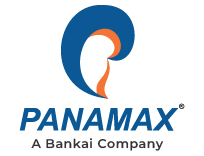Continuous developments in technology are lowering costs by maximizing economies of scale. Disruption in the banking sector is threatening to leave traditional banks out of the competition unless they learn to embrace technology. This has made it crucial for the banks and financial institutions to adopt banking automation and provide a more comprehensive banking experience. New technologies increase the speed, security, and transparency of transactions and facilitate the development of sustainable financial products tailored to the needs of people even with very low, unreliable incomes. Contemporary technology is removing the blockades in delivering financial services, such as lack of identification, formal income, and geographic distance.
The world is witnessing a sea change in financial services delivery as a result of mobile financial services. A surge driven by convenience and a solution to pain points, mobile banking is transforming both developing markets as well as the mature ones. Mobile financial solutions are currently the most viable alternative that can meet the needs of the banked and the unbanked.
The digital financial solutions offer a full range of integrated services due to the increased penetration of mobile phones and have thus aided the evolution of markets beyond the basic financial inclusion. According to a report by World Bank, there are over 850 million registered mobile money accounts across 90 countries today, with USD 1.3 billion transacted through these accounts every day.
Global Trends Automating the Mobile Banking Experience
The world is grappling with COVID-19 pandemic which has only heightened the urgency of using digital financial services to keep financial systems functioning. Mobile financial solution is protecting during this time of social distancing, falling demand, reduced input supply, and tightening credit conditions. The ease of banking anywhere anytime has given mobile banking a competitive edge. As mobile banking technology continues to grow, let us look at the top 5 global trends that are playing a major role in automating the mobile banking experience.
Increase in Popularity of Voice Payments
Voice-activated commands are gaining popularity among global consumers. As security is a major concern in banking, voice recognition is being introduced as one of the methods for two-way authentication. Some individual banks are also allowing customers to make money transfers to trusted payees, inquire about transactions, and report stolen cards through voice only.
Rise in Cardless ATM Withdrawals
Technology is enabling users with speed and convenience in almost every aspect of banking which has made cardless ATM withdrawals appealing to users. In cardless ATM withdrawals, there are two ways to withdraw money - through an app-generated code while the other is near-field communication (NFC). The app generated code requires users to validate transactions with a QR code. On the other hand, in the use of NFC, the ATM sensor is tapped with the phone to withdraw money, without a card. Cardless withdrawals protect users from cloned card fraud, as all assets are secured with encrypted transactions.
Surge in the Use of Neobanks
Neobanks, also known as mobile-only banks are currently pushing the boundaries of innovation and technology. They are revolutionizing the way people bank on mobile phones. By offering a seamless and smooth user experience, they have become popular with the tech-savvy millennial demographic who are accustomed to using applications.
Enhanced Customer Service Through AI and Machine Learning
Customer experience offers a competitive edge to the banks. Through AI and machine learning tools banks can analyze large data sets across categories such as buying patterns, demographics, transaction volumes, and service requests. This can help banks create targeted credit, loan or savings offers that are low-risk for the bank but provides high-value to the clients. A good integration of chatbots as part of the engagement process can deliver quick and personalized interactions, using machine learning.
Blockchain in Banking
Blockchain has been a key enabler of revolution in the banking sector, including mobile. The banking sector is one of the largest users of blockchain technology with high-profile institutions using it to improve productivity, increase cost-effectiveness, and safeguard their assets better. Transactions are closely monitored and visible to all participants in real-time, thus enabling data transparency and fraud reduction in the blockchain. It reduces transaction times and simplifies settlement and reconciliation. Further on, blockchain is the most efficient, transparent and secure way to facilitate international payments because it is based on distributed ledger technology. It removes multiple intermediaries that play a role in traditional cross-border money transfers.
Mobile Banking Anywhere, Anytime
Mobile devices have given consumers the freedom to choose the place, the time, and the way to connect with people and businesses, whilst be up to date with news and perform other tasks on the move. Alongside, mobility today is transforming financial services. It is providing a whole new customer experience as compared to traditional banking by making customers’ lives easier.
Panamax’s Digital Financial Solutions (DFS) leverage the latest technologies to deliver best-in-class services. The DFS suite by the company includes cutting-edge mobile financial services to simplify online transactions and drive financial inclusion for the unbanked and underbanked around the globe.
Get in touch with our experts by scheduling a free demo session to know more about our Digital Financial Solutions.


















